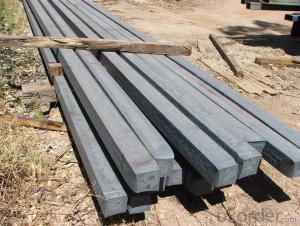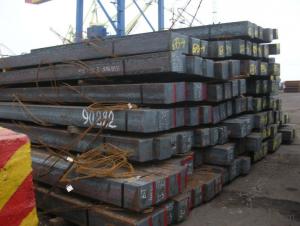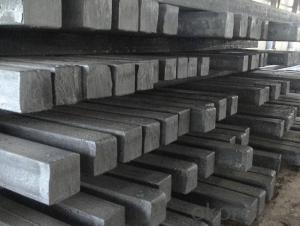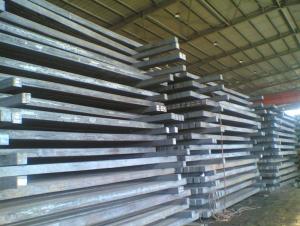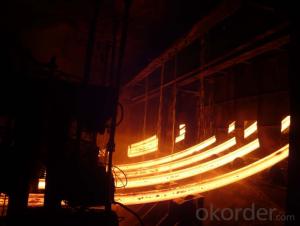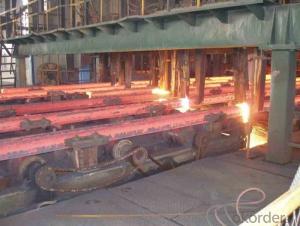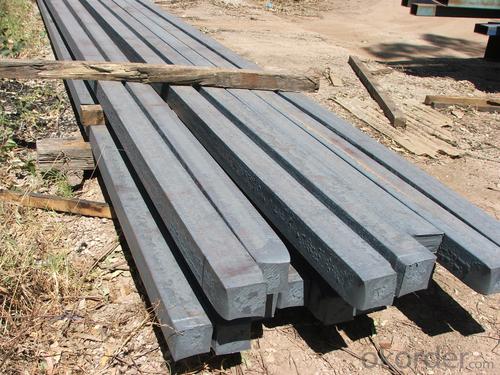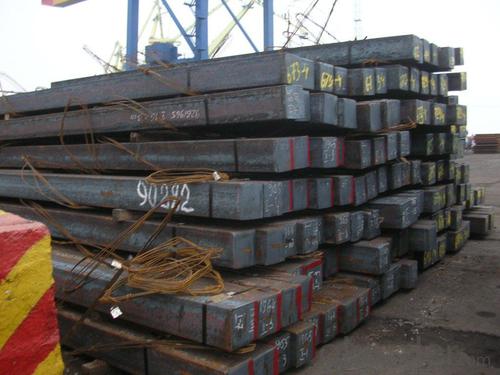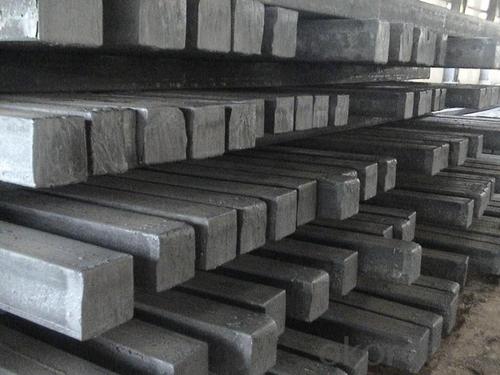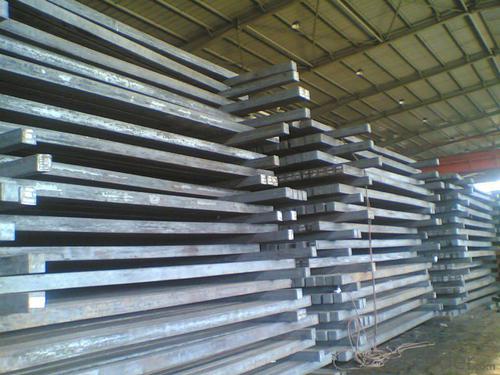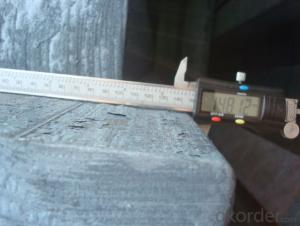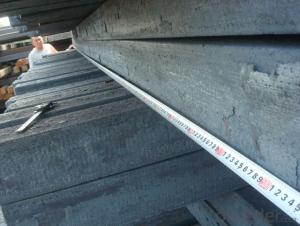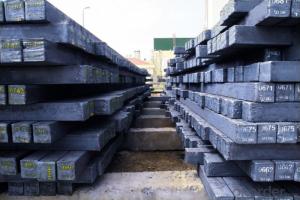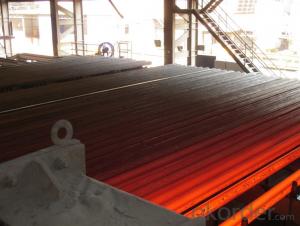Hot Rolled Square Steel Billet 3SP Standard 185mm
- Loading Port:
- Shanghai
- Payment Terms:
- TT OR LC
- Min Order Qty:
- 2000 m.t.
- Supply Capability:
- 10000 m.t./month
OKorder Service Pledge
OKorder Financial Service
You Might Also Like
Structure of Hot Rolled Square Steel Billet 3SP Standard 185mm

Description of Hot Rolled Square Steel Billet 3SP Standard 185mm
PPGI is made by cold rolled steel sheet and galvanized steel sheets as baseplate, through the surface pretreatment (degreasing, cleaning, chemical conversion processing), coated by the method of continuous coatings (roller coating method),
and after roasting and cooling. Zinc coating: Z60, Z80, Z100, Z120, Z180, Z275, G30, G60, G90
Alu-zinc coating: AZ60, AZ80, AZ100, AZ120, AZ180, G30, G60, G90
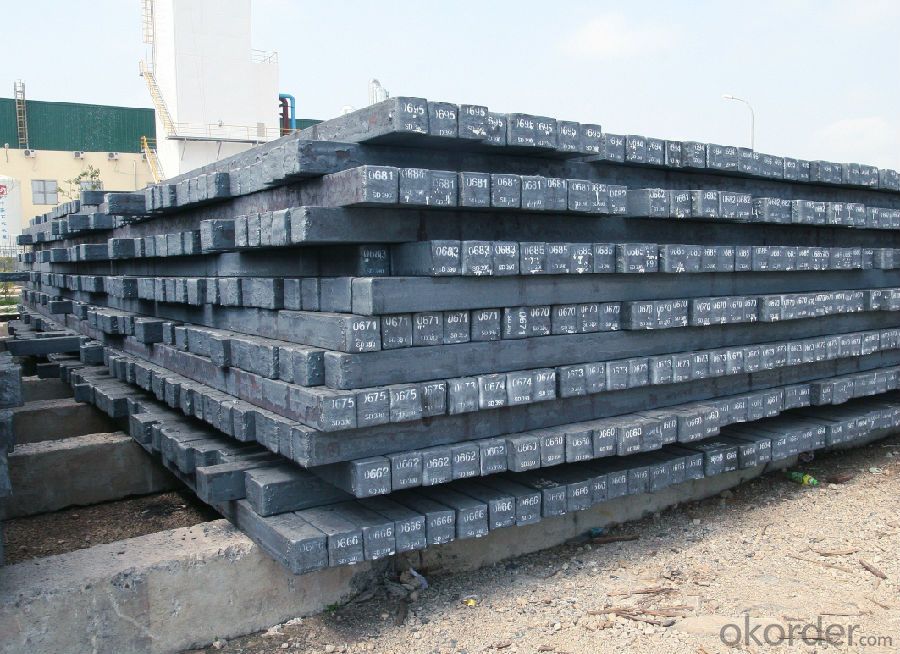
Main Feature of Hot Rolled Square Steel Billet 3SP Standard 185mm
1) Excellent corrosion resistance: The zinc layer provides a good protection of Pre-painted Galvanizeed Steel Sheet.
2) High heat resistance: The reflective surface of the material aids in efficiently reflecting the sunlight away and in turn reducing the amount of heat transmitted. The thermal reflectivity converts into energy savings.
3) Aesthetics: Pre-Painted Galvanized steel sheet is available in plethora of patterns and multiple sizes as per the requirements that given by our customers.
4) Versatility: can be used in the various areas.Standard seaworthy export packing: 3 layers of packing, inside is kraft paper, water plastic film is in the middle and outside GI steel sheet to be covered by steel strips with lock, with inner coil sleeve.
Applications of Hot Rolled Square Steel Billet 3SP Standard 185mm
1) Automotive bodies: filters, fuel tanks, etc.
2) Construction materials: roofings, welding pipes,
3) Electric and electronic appliances: computer cans, etc.
4) Steel cans: containers, etc.
5) Steel furniture: washing machines, refrigerators, microwaves, etc.
6) Drums
7) Office equipment: printer, recorders, etc.
8) Motors and transformers
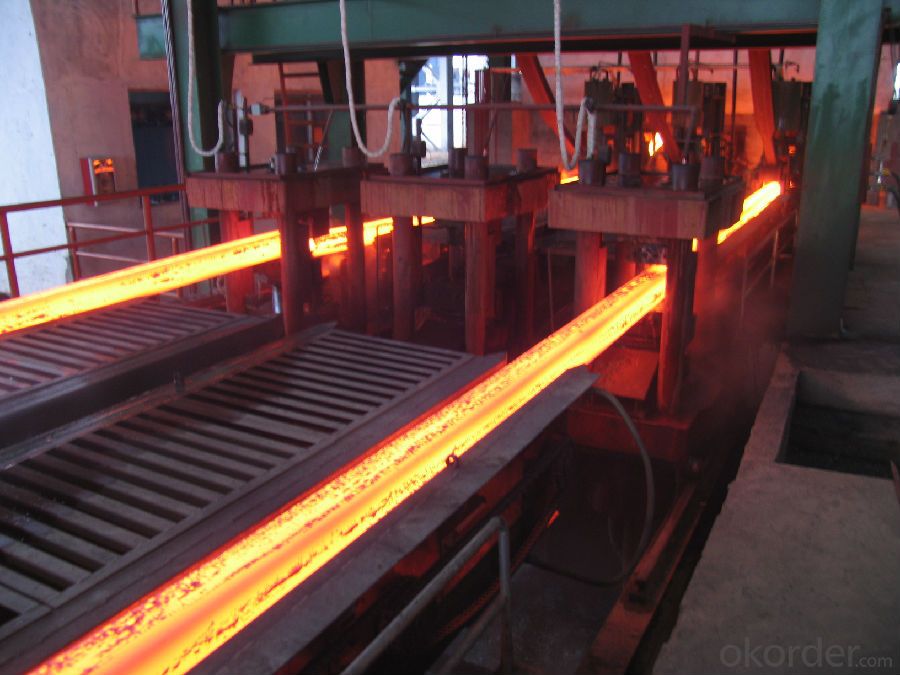
Specifications of Hot Rolled Square Steel Billet 3SP Standard 185mm
| Classified symbol | Yield Point Minimum N/mm2 | Tensile Strength Minimum | Elongation Minimum % | Application | ||||
| N/mm2 | Nominal Thickness mm (t) | |||||||
| JIS | Yogic | 0.25-0.4 | 0.4-0.6 | 0.6-1.0 | 1.0-1.6 | |||
| G3312 | specification | |||||||
| CGCC | CGCC | -205 | -270 | -20 | -21 | -24 | -24 | Commercial |
| CGCD | CGCD | --- | 270 | --- | 27 | 31 | 32 | Drawing |
| --- | CG340 | 245 | 340 | 20 | 20 | 20 | 20 | Structural |
| CGC400 | CG400 | 295 | 400 | 16 | 17 | 18 | 18 | Structural |
| CGC440 | CG440 | 335 | 440 | 14 | 15 | 16 | 18 | Structural |
| CGC490 | CG490 | 365 | 490 | 12 | 13 | 14 | 16 | Structural |
| CGC570 | CG570 | 560 | 570 | --- | --- | --- | --- | Structural |
| ASTM Designation | Yield Point Minimum | Tensile Strength Minimum | Elongation Minimum % | Application | Q/BQB 445-2004(China standard) | ASM A653/A653M | JISG 3312 | |
| ksi(MPa) | ksi(MPa) | TDC51D+Z | (CS TYPE A+Z) | CGCC | ||||
| A653(M)-99 CS TYPE A,B,C | --- | --- | --- | Commercial | TDC52D+Z | CGCD | ||
| A653(M)-99 FS | --- | --- | --- | Lock Forming | TS250GD+Z | (G250+Z) | - | |
| A653(M)-99 DS | --- | --- | --- | Drawing | TS300GS+Z | (G300+Z) | CGC 400 | |
| A653(M)-99 SS Grade33(230) | 33(230) | 45(310) | 20 | Structural | TS350GD+Z | (G350+Z) | CGC490 | |
| A653(M)-99 SS Grade37(255) | 37(255) | 52(360) | 18 | Structural | TS550GD+Z | (G550+Z) | CGC570 | |
| A653(M)-99 SS Grade40(275) | 40(275) | 55(380) | 16 | Structural | ||||
| A653(M)-99 SS Grade50(345) | 50(345) | 65(450) | 12 | Structural | ||||
| A653(M)-99 SS Grade80(550) | 80(550) | 82(570) | --- | Structural | ||||
FAQ of Hot Rolled Square Steel Billet 3SP Standard 185mm
We have organized several common questions for our clients,may help you sincerely:
1. How Can I Visit There?
Our company is located in Tianjin City, China, near Beijing. You can fly to Tianjin Airport Directly. All our clients, from home or aboard, are warmly welcome to visit us!
2. How Can I Get Some Sample?
We are honored to offer you sample.
3. Why choose CNBM?
1, ISO, BV, CE, SGS approved.
2, Competitive price and quality.
3, Efficient service team online for 24 hours.
4, Smooth production ability(50000tons/month) .
5, quick delivery and standard exporting package.
6, Flexible payment with T/T, L/C, Paypal, Kunlun bank, etc.
- Q: How are steel billets used in the production of heat exchangers?
- Heat exchangers rely on steel billets as a fundamental element in their manufacturing process. These devices facilitate the transfer of heat between various fluids, such as air and water, without direct contact. As semi-finished metal products, steel billets serve as the primary raw material for creating the different components of heat exchangers. To begin with, steel billets are utilized in the production of tubes and pipes, which form the primary framework of heat exchangers. These tubes are engineered to endure high pressures and temperatures while effectively transferring heat. Given its exceptional strength and thermal conductivity, steel is an ideal material for this purpose. Subsequently, steel billets undergo various techniques, including hot rolling, forging, or extrusion, to shape them into the required dimensions. This process guarantees that the tubes and pipes possess the desired diameter, thickness, and length, all of which significantly impact the heat transfer efficiency of the heat exchanger. Furthermore, steel billets are also employed in the manufacturing of fins and plates for heat exchangers. Fins are slender, elongated structures that enhance the surface area of the heat exchanger, thus facilitating improved heat transfer. Steel billets are shaped and trimmed to create these fins, which are then affixed to the tubes or plates. These fins provide additional points of contact for heat transfer and contribute to enhancing the overall efficiency of the heat exchanger. In addition, steel billets are crucial in the production of headers and manifolds, which play a crucial role in the distribution and collection of fluids within the heat exchanger. These headers ensure that the fluids flow through the tubes and fins in a controlled manner, maximizing heat transfer and minimizing pressure losses. The strength and durability of steel make it an appropriate material for these vital components. In conclusion, the significance of steel billets in the production of heat exchangers cannot be overstated. They are instrumental in the creation of tubes, pipes, fins, headers, and manifolds, all of which are indispensable components for these devices. By utilizing steel, the heat exchangers benefit from the durability, strength, and thermal conductivity required for efficient heat transfer.
- Q: What is the typical production process for steel billets?
- The typical production process for steel billets involves several steps. First, raw materials such as iron ore, coal, and limestone are obtained. These materials are then processed and transformed into iron through a blast furnace or direct reduction process. The iron is further refined in a basic oxygen furnace or an electric arc furnace to remove impurities and adjust the composition. Once the iron is refined, it is cast into large rectangular molds known as ingots. These ingots are then heated and rolled into semi-finished products called blooms or slabs. Blooms are typically square or rectangular in shape, while slabs are flat and rectangular. The next step is to further process the blooms or slabs into billets. This is done by reheating the semi-finished products and passing them through a series of rolling mills. The rolling mills apply pressure to shape the metal and reduce its thickness. This process is known as hot rolling. After hot rolling, the billets are cooled and inspected for any defects. They may undergo additional processes such as surface treatment or heat treatment to improve their properties. The billets are then typically cut into desired lengths and stored before further processing or shipment to customers. Overall, the production process for steel billets involves obtaining raw materials, refining the iron, casting it into semi-finished products, hot rolling, and final inspection and processing. This process ensures that the steel billets meet the required specifications and quality standards before they are used for various applications in industries such as construction, automotive, and manufacturing.
- Q: What is the role of steel billets in the automotive industry?
- Steel billets are of utmost importance in the automotive industry as they are crucial in the production of various vehicle components and parts. Essentially, steel billets are semi-finished steel products that undergo further processing to achieve the desired shape and size necessary for automotive applications. One primary application of steel billets in the automotive sector is in the production of engine and transmission components. These components, including crankshafts, connecting rods, camshafts, gears, and others that require high strength and durability, rely on steel billets as raw material for forging or casting. This ensures that they can withstand the demanding conditions of engine operation. Another significant use of steel billets in the automotive industry is for the manufacturing of structural components. These components, such as chassis frames, suspension parts, and body panels, need to possess high strength and stiffness to provide safety and rigidity to the vehicle. Steel billets undergo various techniques like hot rolling, cold rolling, or extrusion to produce the necessary forms and shapes required for these structural components. Furthermore, steel billets are also employed in the production of essential fasteners like bolts, nuts, and screws, which are crucial for assembling different parts of the vehicle. These fasteners must possess excellent tensile strength and resistance to vibration and corrosion, making steel billets an ideal choice for their manufacture. Additionally, steel billets find application in the production of various other automotive components, including axles, wheel hubs, brake discs, and steering system parts. All these components require the superior mechanical properties offered by steel billets, such as high strength, toughness, and resistance to wear and tear. In conclusion, steel billets play a vital role in the automotive industry as they serve as raw material for the production of engine and transmission components, structural components, fasteners, and other crucial parts. Their exceptional mechanical properties make them an ideal choice for applications that demand high strength, durability, and reliability, ensuring the safety and performance of vehicles on the road.
- Q: How are steel billets cleaned before further processing?
- Prior to further processing, steel billets undergo a series of steps to eliminate impurities and contaminants. The initial step involves subjecting the billets to a high-pressure water jet to effectively remove loose scale and dirt from the surface. This water jetting process effectively eliminates most loose particles and prepares the surface for further cleaning. Following the initial water jetting, the billets are submerged in an acid bath. This acid bath can consist of a variety of chemicals, such as hydrochloric acid, sulfuric acid, or a combination of both. The purpose of the acid bath is to eliminate any remaining scale or oxide layers from the billets' surface. The acid reacts with these impurities, dissolving them and leaving behind a clean surface. Once the acid cleaning is completed, the billets undergo a thorough rinsing with water to ensure the removal of any traces of acid. This rinsing process is vital to prevent any acid residue from affecting the final product's quality. After rinsing, the billets are dried either using hot air or in a furnace to eliminate any moisture. This drying process is essential in preventing surface rusting or corrosion on the billets. Overall, the cleaning of steel billets prior to further processing is a critical step in guaranteeing the quality and integrity of the final product. It effectively eliminates impurities, scale, and oxide layers from the surface, resulting in a clean and uniform surface for subsequent processing operations.
- Q: What is the difference between steel and billet in the process?
- My understanding is that..:Billet: Billet, refers to the casting of roughSquare steel: Square, Bar, the product is rolled on the basis of square billet.
- Q: How do steel billets contribute to the overall aesthetics of a structure?
- Steel billets, which are essentially semi-finished steel products, play a significant role in enhancing the overall aesthetics of a structure. While their primary purpose is to provide strength and support, their visual appeal should not be underestimated. First and foremost, steel billets are responsible for the creation of various architectural elements, such as columns, beams, and decorative features. These elements not only serve structural purposes but also contribute to the overall aesthetics of the building. The clean lines and sleek appearance of steel billets can give a modern and contemporary feel to the structure, adding a touch of sophistication and elegance. Moreover, steel billets can be manipulated and shaped into intricate designs and patterns, making them highly versatile in terms of aesthetics. Whether it is a grand entrance gate, a unique staircase railing, or an ornate decorative panel, steel billets can be molded and fabricated to create visually appealing and eye-catching features that enhance the overall charm of the structure. Furthermore, steel billets can be finished with various coatings, such as paint, powder coating, or galvanization, which not only provide protection against corrosion but also contribute to the aesthetic appeal. These finishes allow for customization, as they can be chosen to complement the overall design and color scheme of the structure, creating a cohesive and visually pleasing look. In addition, steel billets can be used in combination with other materials, such as glass or wood, to create stunning architectural features. The contrast between the strength and rigidity of steel and the transparency or warmth of other materials can create a visually striking effect, adding depth and interest to the structure's design. Lastly, steel billets offer a sense of durability and timelessness to the structure. The inherent strength and resilience of steel give the impression of solidity and longevity, which are essential factors in creating an aesthetically pleasing building. The sleek and modern appearance of steel billets can also evoke a sense of progress and innovation, enhancing the overall aesthetic appeal of the structure. In conclusion, steel billets contribute to the overall aesthetics of a structure by providing structural support, allowing for intricate designs, offering customization options, creating contrasts with other materials, and conveying a sense of durability and timelessness. Their visual appeal, along with their strength and versatility, makes steel billets an essential component in creating an aesthetically appealing and architecturally pleasing structure.
- Q: What are the common surface defects in steel billets during cooling?
- Common surface defects in steel billets during cooling include cracks, surface scaling or oxidation, and surface decarburization.
- Q: How do steel billets affect the overall cost of a project?
- Steel billets can have a significant impact on the overall cost of a project. Firstly, the cost of steel billets themselves can vary depending on factors such as the size, grade, and market demand. Higher quality or specialized steel billets may come at a higher cost, while lower quality or readily available billets may be more cost-effective. Additionally, the quantity of steel billets required for a project can greatly affect the overall cost. Larger projects that require a substantial amount of steel may have to purchase a greater number of billets, which can increase the cost. On the other hand, smaller projects with fewer steel requirements may be able to minimize costs by purchasing a smaller quantity of billets. Transportation and logistics also play a role in the cost of steel billets. The distance between the billet supplier and the project site, as well as the availability of transportation options, can impact the overall cost. Shipping costs, handling fees, and other associated expenses can add to the final cost of the project. Furthermore, the quality and suitability of the steel billets for the specific project requirements can influence costs. Using low-quality or unsuitable billets may result in delays, rework, or even failure of the project, leading to additional expenses. Therefore, it is crucial to ensure that the chosen steel billets meet the necessary specifications and standards, even if they come at a higher initial cost. Lastly, the overall market conditions and fluctuations in the steel industry can affect the cost of steel billets. Factors such as supply and demand, currency exchange rates, and global economic trends can impact the price of steel billets, thereby influencing the overall project cost. In summary, the cost of steel billets can have a significant impact on the overall cost of a project. Factors such as the cost of the billets themselves, the quantity required, transportation and logistics, quality and suitability, and market conditions all contribute to the final cost. Therefore, careful consideration and analysis of these factors are essential to effectively manage and budget for steel billets in a project.
- Q: What is the melting point of steel billets?
- The melting point of steel billets may vary depending on the type of steel utilized. In general, the melting point of steel falls within the range of 1370 to 1530 degrees Celsius (2500 to 2800 degrees Fahrenheit). However, it is worth noting that diverse grades and compositions of steel can possess slightly different melting points. Moreover, factors such as impurities, alloying elements, and the inclusion of other metals in the steel can also influence the melting point. Consequently, it is always advisable to refer to the specific material specifications or seek guidance from metallurgical experts to obtain precise information regarding the melting point of steel billets.
- Q: What is the role of steel billets in the manufacturing of tools and dies?
- Steel billets are essential for the production of tools and dies, playing a crucial role in the manufacturing process. These semi-finished steel products serve as the starting material, being heated, forged, and shaped to create the desired tools and dies used in different industries. The use of steel billets offers several advantages, primarily due to their high strength and durability. Steel is known for its excellent mechanical properties, such as hardness, toughness, and wear resistance. When manufacturers use high-quality steel billets, they can be confident that the resulting tools and dies will have the necessary strength and durability to withstand demanding conditions. In addition, steel billets provide versatility in terms of customization. They can be easily shaped and formed into various sizes and dimensions, allowing manufacturers to create tools and dies that meet specific requirements. Whether it's a complex mold or a precision cutting tool, steel billets offer the flexibility needed to produce intricate and accurate components. Moreover, steel billets are preferred in the manufacturing of tools and dies due to their thermal conductivity. Steel effectively conducts heat, which is crucial for processes like heat treatment, quenching, and tempering. These thermal treatments are often used to enhance the hardness and strength of tools and dies, making them more resistant to wear and extending their lifespan. In conclusion, steel billets are indispensable in the manufacturing of tools and dies. They serve as the primary material for these components, providing high strength, durability, customization options, and thermal conductivity. By utilizing steel billets, manufacturers can create tools and dies that meet the demanding requirements of various industries, ensuring optimal performance and longevity.
Send your message to us
Hot Rolled Square Steel Billet 3SP Standard 185mm
- Loading Port:
- Shanghai
- Payment Terms:
- TT OR LC
- Min Order Qty:
- 2000 m.t.
- Supply Capability:
- 10000 m.t./month
OKorder Service Pledge
OKorder Financial Service
Similar products
Hot products
Hot Searches
Related keywords
